“Please do not study” is scrawled in chalk on one of the columns inside the library at the new Student Pavilion at the University of Melbourne. The request is a clue, a tip-off that the main priority in this particular corner of one of the world’s top public research institutions, is not academics. Instead, the idea is to provide an environment where students, most of whom live off campus, can meet for a coffee, chat on a sunny terrace, unwind alone with a good book—and if they must, do some studying. Such campus spaces for socializing and decompressing, until now, had been lacking, says Julie Eizenberg, founding principal of Santa Monica, California–based Koning Eizenberg Architecture (KEA), the design architect for the four-story, 27,000-square-foot building. The school “wanted to amp up its student experience game,” adds Eizenberg, who is an alumna of the School of Design at the university, which ranks as Australia’s second-oldest.
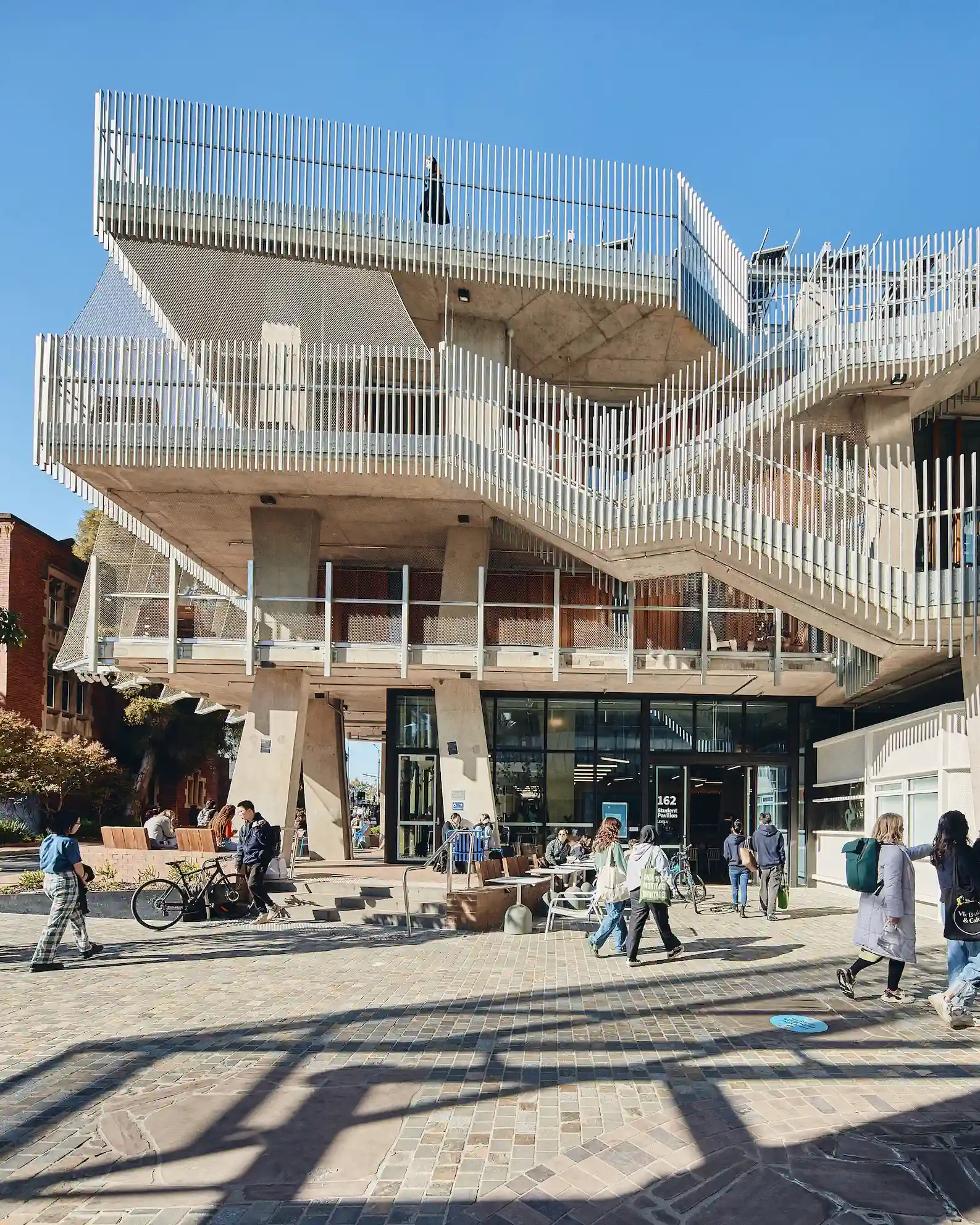
1
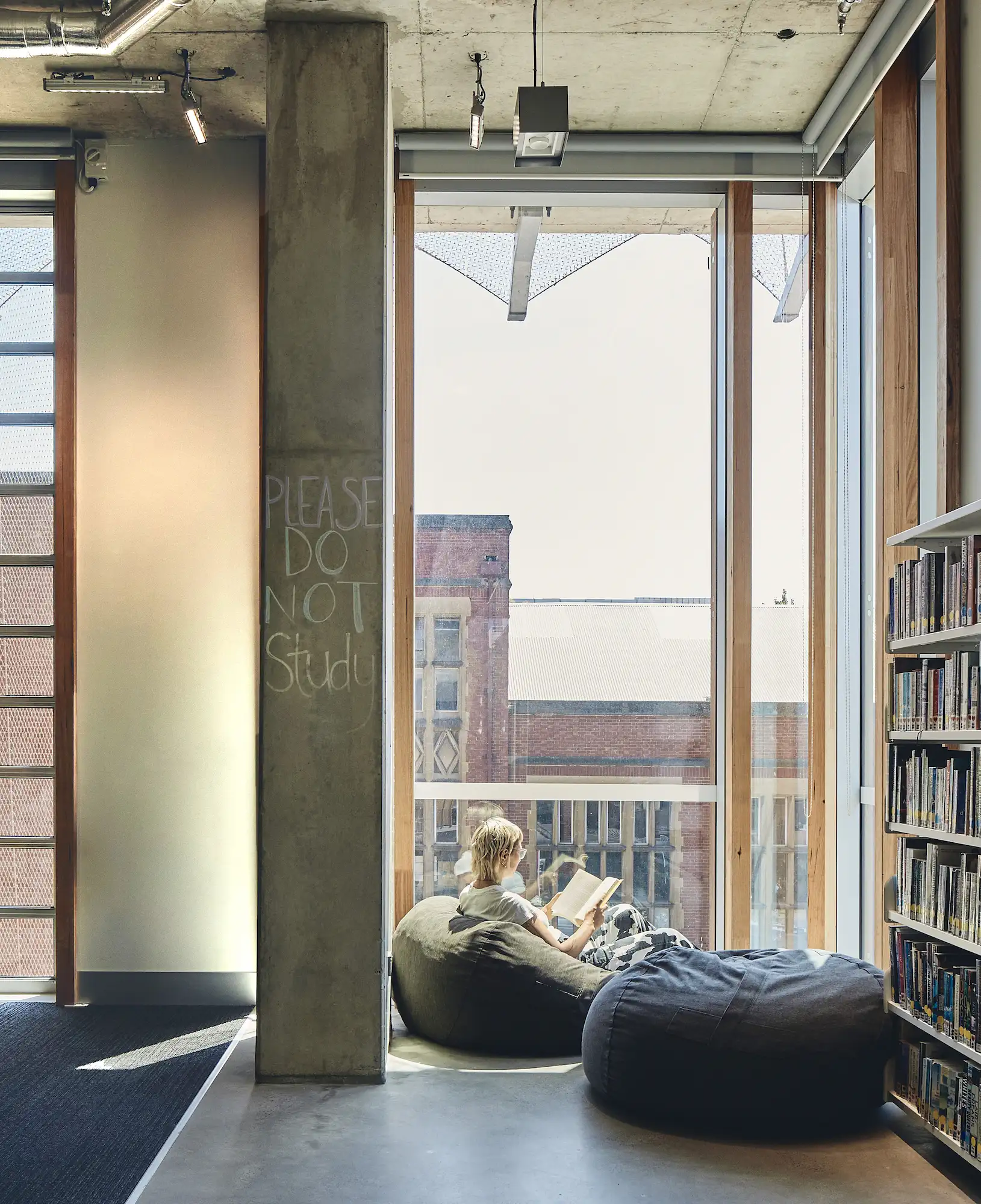
2
A zigzagging exterior stair (1) has landings that expand into terraces, and the library (2), as with the rest of the building, includes comfortable and easily rearranged seating. Photo © Peter Bennetts
The Pavilion, completed last year, includes a food court, meeting rooms, and a kitchen that students can reserve for events or use to reheat food they bring from home, and plenty of places to gather in small groups or larger ones, both indoors and out. This is all in addition to the “recreation” library, where instead of scholarly journals and reference books, there is a diverse collection of fiction, graphic novels, magazines, ebooks, and audiobooks, as well as a game room. The new building is one piece of a much larger “student precinct”—a 225,000-square-foot collection of facilities focusing on connecting students with each other and showcasing arts and culture. Encompassing both new construction and extensive renovation, the precinct project involved five architecture offices and two landscape firms, all overseen by the Melbourne-based practice Lyons, who served as the endeavor’s executive architect. Eizenberg, who was joined by KEA principal Nathan Bishop on the project, describes the design process as unusually collaborative, but with each building having its own individual author and distinct character.
At the heart of the precinct is a new three-acre landscaped space with an amphitheater and native plantings. It replaces a constructed plinth that the buildings in this part of campus previously sat on with the more natural topography, helping negotiate a grade change of more than 25 feet over the entire complex. KEA’s building responds to this newly established public realm with an exposed concrete zigzagging outdoor stair whose landings extend to bridge to the neighboring Arts and Cultural Building, designed by Lyons, and expand to create roomy projecting terraces. Eizenberg characterizes this vertical circulation element as a sort of invitation: “We needed two sets of stairs, so we pulled one outside to create a sense of ownership and inclusion,” she explains. The terrace at the building’s top-most level—shaded by an awning of photovoltaic panels, looks out over the new public space and, off into the distance, the skyline of Melbourne’s central business district.
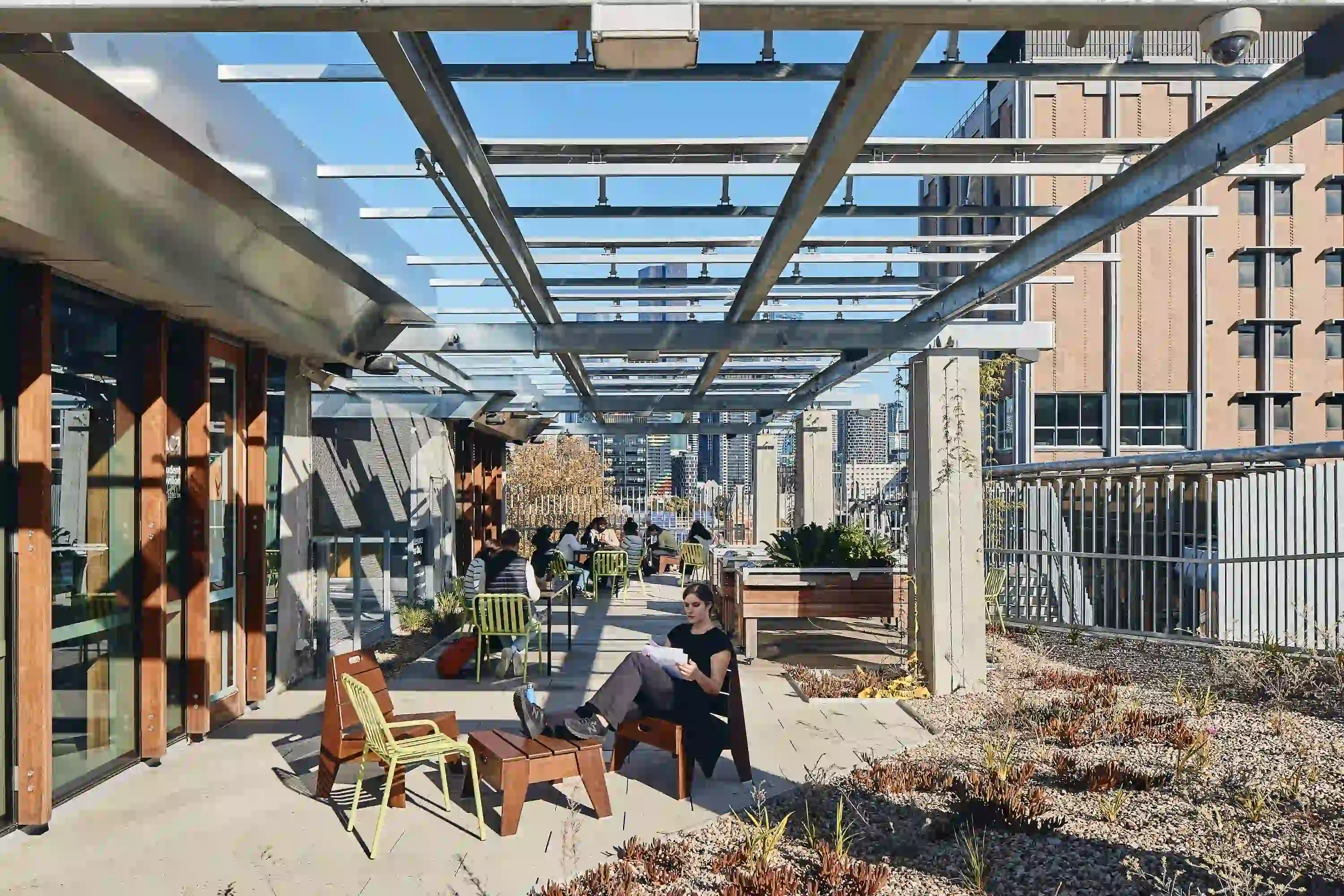
The top-floor deck has an awning of photovoltaic panels.
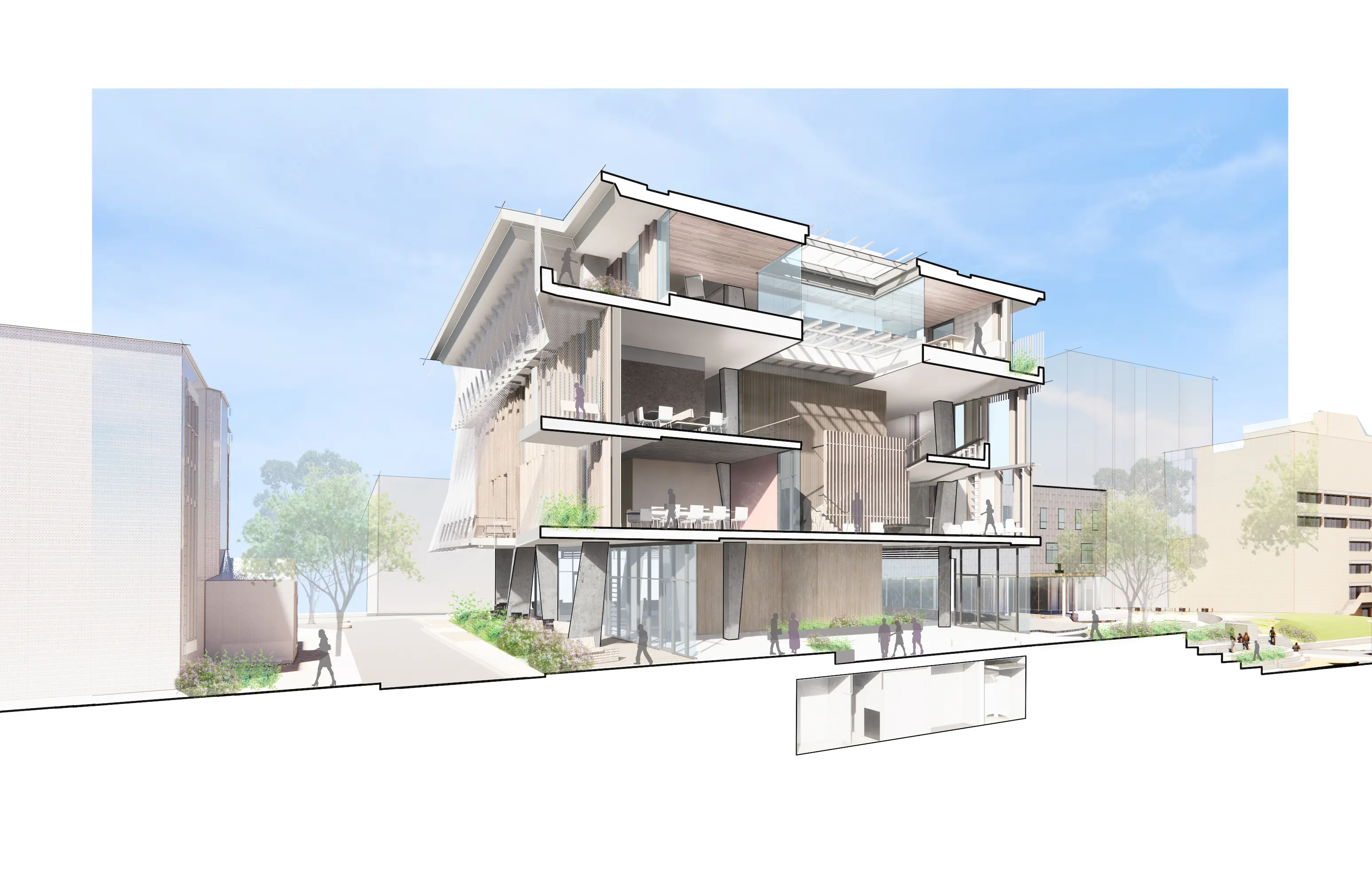
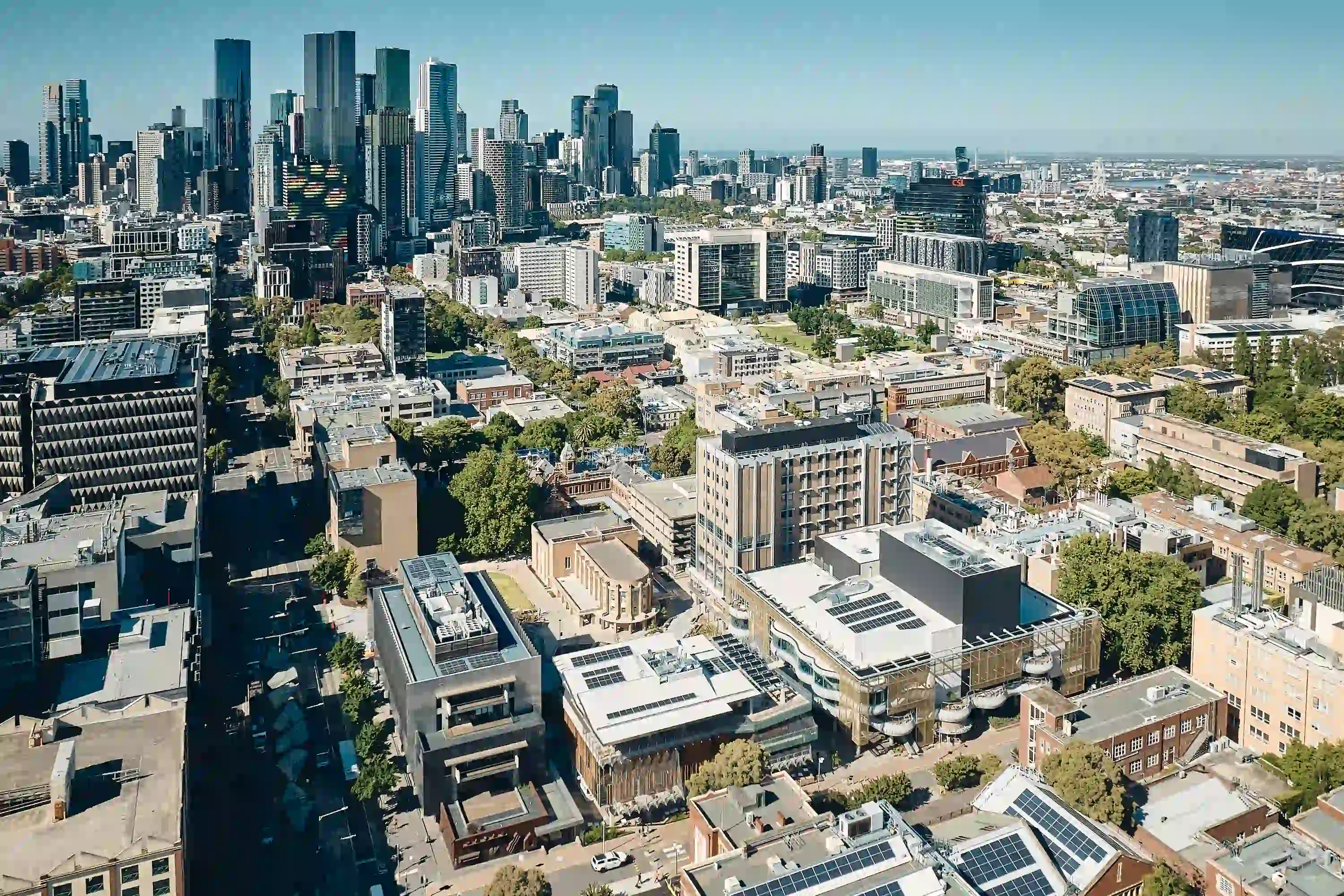
Photos © Peter Bennetts; Section courtesy the architect
On the interior, the exposed concrete structure continues with muscular trapezoidal columns. Accents of sustainably sourced blackbutt, a tree species native to eastern Australia, which is also used for the exterior cladding, add warmth. Generous windows—especially on the south elevation, facing the new landscaped space and where heat gain is less of a concern—bring in plenty of daylight. The furnishings, including beanbag chairs, camp-like slingback chairs, and for the terraces a KEA-designed sturdy timber-slat chair, are easily moved and rearranged to accommodate student needs. “There is the sense that students are permitted to make a mess,” says Eizenberg, explaining the feeling that the architects were shooting for. And KEA has definitely succeeded, creating a building that is tough, but comfortable and relaxed. The University of Melbourne’s new Pavilion is suitably gregarious and informal, inviting students to make it their own.



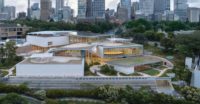

Post a comment to this article
Report Abusive Comment